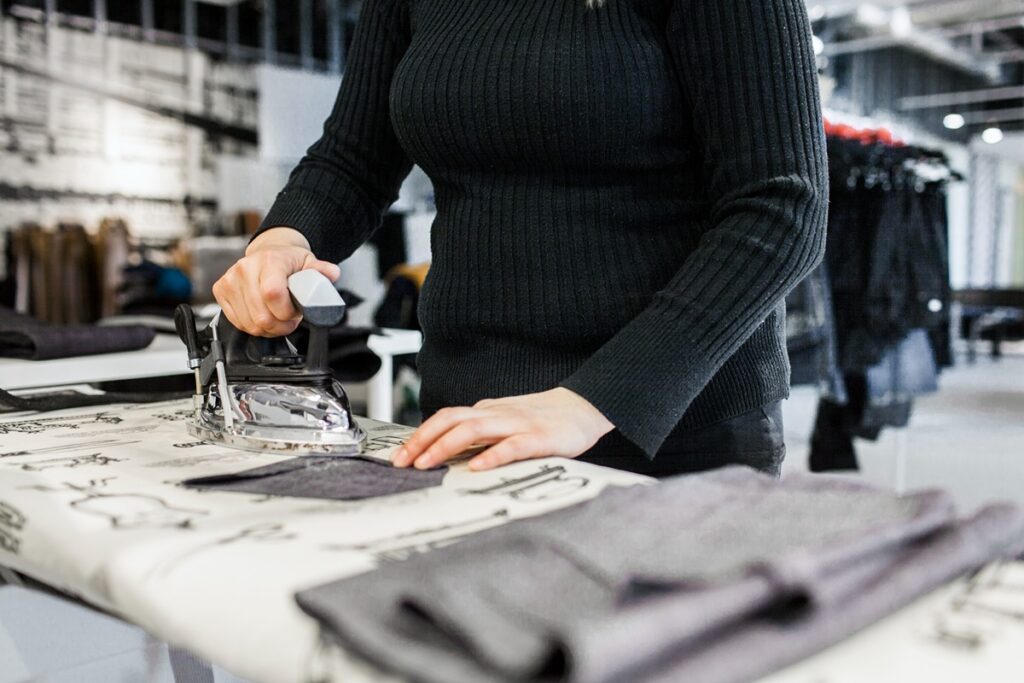The ’90s are back! Every day we see the 90s style coming back into fashion, baggy jeans, moody colors, and overall grungy looks making their way back into our closets. All of us probably own a pair of black jeans. They are a staple in every wardrobe, but how can we recycle our jeans to give them that faded look? A pair of faded black jeans can cost up to 50 dollars, but continue reading, and we will show you how to make your own for free.
There are a couple of ways to fade jeans. Using bleach is one of the most common ways. However, it’s not what I’d recommend. Salt is an effective yet simple way to fade black jeans. You put 2 cups of salt in a bucket of cold water and put your jeans inside and leave them for around 30 minutes. The end result will be faded-black jeans.
Key Takeaways
- There are many ways to fade a pair of black jeans.
- If you decide to use bleach, be extremely careful because this is a dangerous chemical.
- You can use natural ingredients to fade your jeans, such as salt, lemon juice, and coffee beans.
- Even if you don’t try, your black jeans will fade away in time due to constant washing.
Fading Black Jeans: Tips & Tricks

Don’t Grab the Bleach Right Away
Our first thought after the decision to start a DIY jeans fading process will most probably be to grab the bleach and pour it over our jeans. Don’t do this unless you want to ruin your jeans. Bleach is a very strong chemical and will destroy the fabric if you leave it on too long. Just pouring bleach will make the fabric very fragile and easy to tear. There is, however, a safer method.
If you insist on using bleach, make sure to dilute it in water. To do this in the safest way, we recommend you put bleach in your washing machine load; around ½ cup will do the trick, depending on how light you want your jeans to be, you can add more or less. Put your jeans in the washing machine and let them “wash” for around 30 minutes. After they are done, wash them with just cold water (no bleach this time) and let them dry. Only after they are dry can you see the color change better.
Check your pantry
If you are someone that doesn’t like to work with chemicals such as bleach, we recommend you try to use household products you probably already have in your pantry. An effective way to fade your jeans is to use salt, yes, we meant the regular salt you use for seasoning your food. The method is quite simple, just put your jeans in cold water and add 2 cups of salt. Your jeans should be completely under the water soaking. Let the jeans soak and after 30 minutes or so, rinse with cold water and leave the jeans to dry.
Another way you can achieve the ’90s faded jeans look is by using a lemon. Lemons have citric acid which is a natural oxidizing agent that can be used for lightening. Keep in mind that you will need quite a few lemons for this fading process, but at least they smell better than bleach. First, soak your jeans in water, making sure that you get every single inch wet. After this, you are going to want to fill your bathtub with lemon juice and put your wet jeans in. Make sure that they are fully submerged in the lemon juice and leave them for a few hours.
Keep in mind that the jeans will appear darker when wet so if you want a more faded look, just keep them in the lemon juice longer. After you are satisfied with the shade, just wash them like you normally would and leave them to dry. It’s worth mentioning that this method will only make your jeans a few shades lighter, but it will make your bathroom smell amazing.
Speaking of things that smell amazing, another way to naturally fade your jeans is by using coffee. Yes, the drink that gets us up in the morning can also be used to make your jeans look fashionable. The method is quite simple, just take a handful of green coffee beans. If these are not available for you, roasted beans will work too, and rub them on the areas you like to have a faded look. You can rub as much as you like until you are satisfied with the shade. The acidity in coffee beans will make the color fade away, leaving you with a pair of grungy-looking pair of jeans.
Check your toolbox
If you are in a hurry or just out of lemons, there is another super-fast way to make your jeans stand out. Check your toolbox and look for sandpaper; once you find it, cut off a piece and gently rub it on your jeans. However, be very careful not to pierce through the fabric or don’t. The distressed look is also pretty cool. Oh also, don’t forget to wear gloves.
The old-school method
Do you ever look at a pair of jeans that belonged to your parents in the ’80s and ’90s and think to yourself, “how do I get that perfect faded look”? Well, good news! You don’t have to do anything. Old jeans usually look the way they do because they have been worn for a long time. You just have to start wearing your new pair of jeans more often, and eventually, you will get the look you want. Make sure to regularly wash your black jeans and wear them as often as possible. The more you wear them, the more friction they encounter, leading the dark colors to fade away naturally.
Conclusion
Fashion constantly changes, and styles from the past keep coming back. Keep this in mind when you want to throw away a piece of clothing because you think it’s “outdated.” In a few years, it may be the most prominent fashion statement piece you own. Recycling old clothes is great, not only for your wallet but for the environment as well. If you are looking to hop on board the faded grungy jeans trend, you don’t have to spend your money and time walking through shopping centers. Just open your closet and use our tips to recycle the black jeans you already own. The best part is that you can customize your jeans and make them exactly how you like them!
Further Reading
There is a blog that discusses whether linen shrinks if you want to read more.
A list of incredible irons for sewing and quilting is also included. Finding out which yarn is superior between cotton and acrylic.
Sewing is definitely one of my biggest hobbies. I’ve been doing it since i was young, thanks to my mother. I specialize in sewing, and that’s what i mostly write about.



